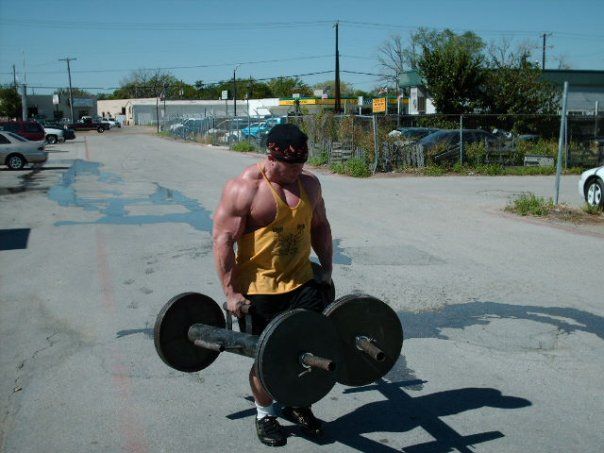
It may not be for everyone, but strongman training might have a place in your routine, whether you are a powerlifter, bodybuilder or just a general lifter. EFS sponsored athlete Josh Bryant has one such story to prove how vital it was to his transformation.
“I had positive changes in my physique with no changes in my diet,” Bryant said. “I got leaner and my biceps were better, just because of picking up stones and fickle fingers. It just shows that compound exercises are the ones that make you grow.”
When Bryant was living in California, he was searching left and right for training partners, finally finding some capable ones 100 miles away.
In addition to squatting, they were also into strongman training, so Bryant gave it a try. At first, he couldn’t lift a 200-pound stone, but within a week he was doing a 400-pound stone with ease.
“It was all technique work,” Bryant said.
It also got him hooked on that type of training, even if it isn’t at the core of everything he does. His deadlift got super-explosive during this training and the time under tension doing the various lifts – yoke, farmer’s walk, log press, stones, flipping tires, tossing kegs, chain drags – made a difference.
“It taught me how to be as aggressive as I possibly could,” Bryant said. “It’s fun and there’s so many different events.”
Bryant would do strongman events one day per week during that phase, and it’s something EFS sponsored athlete Chad Smith, owner of Juggernaut Training Systems, also suggests. When doing a program like 5/3/1, he outlined doing something like three days of lifting with the main lift along with an additional day of just strongman training.
“One day of strongman training per week would be a great benefit,” Smith said. “It provides a mental break from the possible monotony of the big three (deadlift, bench and squat). The lifts are challenging and fun, and will provide the athlete with a new challenge.”
Both Bryant and Smith advise against any serious powerlifter or bodybuilder that’s deep into training for a meet or show to make the change, but there seems to be a place for it for those just training for general strength. It also can be a benefit for athletes, no matter their sport. The competitive nature of the lifts, where it's often a race to finish them, creates an intense and enjoyable atmosphere, but there are also strength benefits.
“Using strongman implements to perform triple-extension movements are beneficial for athletes for two basic reasons,” said Mark Watts, who is the director of strength and conditioning at Denison University.
“Flipping tires and throwing medicine balls are both explosive movements which eliminate the eccentric contraction and the catch phase of the exercise. This can drastically reduce soreness and can decrease recovery time while still maintaining the benefits of the triple extension."
“The second reason is attributed to strongman implements being awkward in nature, which allows less than perfect technique when using them," Watts said. "Performing clean and presses with logs and sandbags requires tremendous strength and explosive power.”
An important factor for Bryant was the time under tension aspect of strongman training.
“If you walk 100 feet with 600 pounds, the time under tension with that kind of weight is a catalyst for muscle growth,” Bryant said. “It also builds a lot of mental toughness. There’s absolutely a place for it.”
Bryant said constantly changing the events kept things fresh and exciting, and that variety allowed him to make big gains in every aspect of his lifting.
Strongman training can also serve as an excellent substitute for some with waning motivation.
“The recreational lifter will definitely benefit from the total body strength, power and endurance built by using strongman events as a part of their training,” Smith said.
 Purchase strongman equipment here.
Purchase strongman equipment here.










